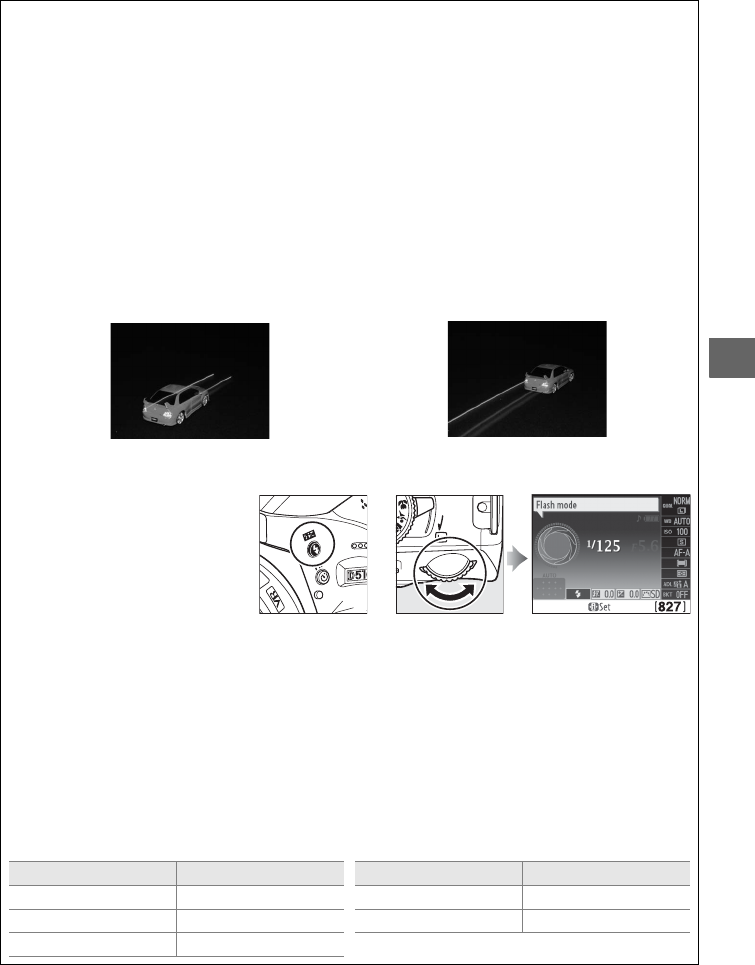
39
z
A Flash Modes
The flash modes listed on the previous page may combine one or more of the following
settings, as shown by the flash mode icon:
• AUTO (auto flash): When lighting is poor or subject is back lit, flash pops up automatically
when shutter-release button is pressed halfway and fires as required.
• j (red-eye reduction): Use for portraits.
Red-eye reduction lamp lights before flash fires,
reducing “red-eye.”
• j (off): Flash does not fire even when lighting is poor or subject is back-lit.
• SLOW (slow sync): Shutter speed slows automatically to capture background lighting at night
or under low light.
Use to include background lighting in portraits.
• REAR (rear-curtain sync): Flash fires just before shutter closes, creating a stream of light behind
moving light sources (below at right).
If this icon is not displayed, flash will fire as the
shutter opens (front-curtain sync; the effect this produces with moving light sources is
shown below at left).
Front-curtain sync Rear-curtain sync
A Choosing a Flash Mode
The flash mode can also be
selected by pressing the M
button and rotating the
command dial (in P, S, A, M, and 0
modes, raise the flash before
using the M button to choose the
flash mode).
+
M button Command dial Information display
A The Built-in Flash
For information on the lenses that can be used with the built-in flash, see the Reference
Manual (on CD).
Remove lens hoods to prevent shadows.
The flash has a minimum range of
0.6 m (2 ft.) and can not be used in the macro range of zoom lenses with a macro function.
The shutter release may be briefly disabled to protect the flash after it has been used for
several consecutive shots.
The flash can be used again after a short pause.
A Shutter Speeds Available with the Built-in Flash
Shutter speed is restricted to the following ranges when the built-in flash is used:
Mode Shutter speed Mode Shutter speed
i, k, p, s, w, g, P, A
1
/200–
1
/60 s S
1
/200–30 s
n, 0
1
/200–
1
/125 s M
1
/200–30 s, Bulb
o
1
/200–1 s


















